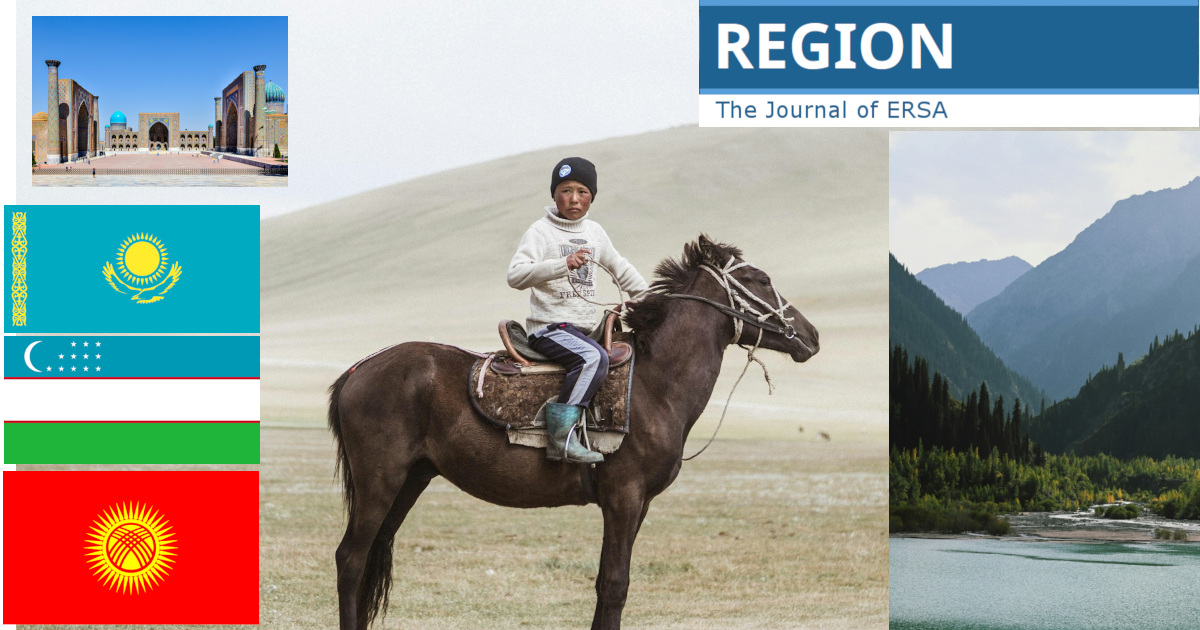Positive Outcomes of Cross-Border Tourism Development Cooperation: A Case of Kazakhstan, Kyrgyzstan and Uzbekistan
DOI:
https://doi.org/10.18335/region.v11i2.494Abstract
The development of cross-border tourism between neighboring countries has become increasingly popular in recent decades. In European countries where the visa-free regime is established, this scheme is well developed and positively affects the development of the country's economy. Developing cross-border areas and establishing cross-border cooperation with neighboring countries is one of the priorities of Central Asian state policy. In the last ten years, several large-scale cross-border platforms aimed at developing tourism have been implemented among the more developed countries (Kazakhstan, Kyrgyzstan and Uzbekistan) in Central Asia, so our study was based on the border regions of the three countries mentioned above. The study aims to highlight the benefits of cooperation in cross-border tourism by examining the experiences and expectations of experts who are well-versed in the field of tourism. A qualitative research method was mainly used in semi-structured interviews focused on the positive results associated with the development of cross-border tourism among people familiar with the region's tourism. The analysis showed that according to the informants, the development of cross-border tourism has a moderate impact on the joint development of infrastructure projects by countries. The results also showed that all of the survey participants believed that cross-border tourism would provide an impetus to strengthen joint tourism marketing and the exchange of knowledge and innovation between countries. In short, it can be seen from the results of the research that the respondents generally highly appreciated the positive influence of the development of cross-border tourism on the growth of the country's economy.

Downloads
Published
How to Cite
Issue
Section
License
Copyright (c) 2024 Imanaly Akbar, Akmaral Tazhekova, Zabira Myrzaliyeva, Bauyrzhan Pazylkhaiyr, Serik Mominov

This work is licensed under a Creative Commons Attribution 4.0 International License.
REGION is an open journal, and uses the standard Creative Commons license: Copyright We want authors to retain the maximum control over their work consistent with the first goal. For this reason, authors who publish in REGION will release their articles under the Creative Commons Attribution license. This license allows anyone to copy and distribute the article provided that appropriate attribution is given to REGION and the authors. For details of the rights authors grant users of their work, see the "human-readable summary" of the license, with a link to the full license. (Note that "you" refers to a user, not an author, in the summary.) Upon submission, the authors agree that the following three items are true: 1) The manuscript named above: a) represents valid work and neither it nor any other that I have written with substantially similar content has been published before in any form except as a preprint, b) is not concurrently submitted to another publication, and c) does not infringe anyone’s copyright. The Author(s) holds ERSA, WU, REGION, and the Editors of REGION harmless against all copyright claims. d) I have, or a coauthor has, had sufficient access to the data to verify the manuscript’s scientific integrity. 2) If asked, I will provide or fully cooperate in providing the data on which the manuscript is based so the editors or their assignees can examine it (where possible) 3) For papers with more than one author, I as the submitter have the permission of the coauthors to submit this work, and all authors agree that the corresponding author will be the main correspondent with the editorial office, and review the edited manuscript and proof. If there is only one author, I will be the corresponding author and agree to handle these responsibilities.




